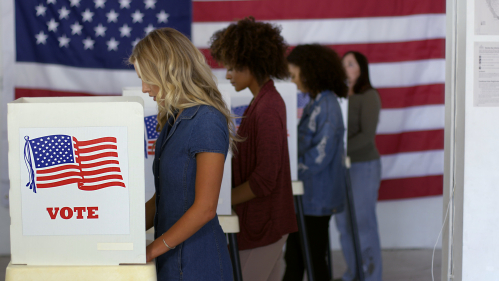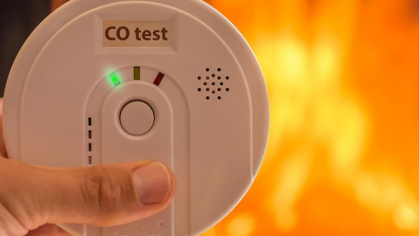Midterm Election: Rutgers Polling Expert Sees Dobbs Decision, Gun Control as Big Drivers

The midterms are just about a month away. Earlier this year, some experts predicted the lackluster economy and rising inflation would result in a red wave at the polls, while others said the Supreme Court’s Dobbs decision would ding Republicans, giving them a much slimmer chance of gaining seats in the House and Senate.
So, which way will the tide turn in November? Ashley Koning, director of Rutgers-Eagleton Center for Public Interest Polling, tells us the key issues and voter blocs that we need to keep an eye on come Nov. 8.
Is the reversal of Roe v. Wade motivating young voters and suburban women voters? How about independent voters? If so, how are they leaning?
The overturning of Roe v Wade shifted the landscape for the 2022 midterm election cycle. It turned what was to be a referendum on a weakened President Biden that followed historical patterns of favoring the party out of power to – at least in part – a fight over reproductive access and individual rights.
Originally, the 2022 midterms were predicted to be a Republican onslaught, but since Dobbs, some potential paths for Democratic victory have opened up – at least in the Senate – and Democratic candidates across the country have attempted to motivate voters by highlighting their opponents’ anti-abortion stances.
The focus on Dobbs appears to be working for the Democrats to some extent. In the wake of the decision, women – young women, in particular – make up the majority of newly registered voters across the country, but whether it will be enough to beat earlier Republican gains in registration pre-Dobbs remains to be seen. Young voters have also been found to be more motivated by the Dobbs decision. These two key voting blocs – women and young voters – are more likely to support abortion, more likely to vote Democratic, in general, are more likely to vote against an anti-abortion candidate due to the overturning of Roe.
Suburban voters are another segment within the voting bloc of women who are key to easing a Republican sweep this midterm. Responsible in large part for the Democratic wave in 2018 and Biden’s victory in 2020, suburban women voters make up about a quarter of the electorate. Much like independents, however, these voters aren’t a guarantee for one side of the aisle or the other. Yet the majority of suburban women identify as pro-choice, so the Dobbs ruling may have a substantial impact on their likelihood to vote and for whom they are voting.
As for independents, the hold Republicans once had several months ago has diminished, and polls show a slight edge for the Democratic party as of now, alongside improved job ratings for President Biden. Much like other key voting blocs, independent votes may very well be influenced by the Dobbs decision, among other issues. Margins are small, however, and all of this can change in the remaining weeks until Election Day.
Is concern about potential school shootings in the wake of Uvalde carrying similar weight with voters?
While gun control is not the top concern for 2022 voters, it could potentially be another galvanizing issue for Democrats – particularly young voters and women voters – much like crime and safety has been a motivator recently for Republicans. Voters say that gun policies are extremely important to their vote. The issue has featured prominently in campaign ads. And the Supreme Court’s ruling last term on restricting states' concealed carry limitations in addition to the Buffalo and Uvalde mass shootings have brought the issue to the surface once again after somewhat of a pandemic-induced pause. The issue is especially fresh and prevalent for young voters, but only time will tell if it can motivate the voting bloc enough to turn out to the polls – especially given how young voters are perennially a low turnout bloc.
Are there are other events that you’re seeing that impact the way a vote may lean in the midterms? What are those factors, and how do you anticipate that they will affect the outcome?
It’s always the economy. We know the economy and presidential approval ratings are two of the biggest drivers of vote choice in an election, and even in this unprecedented era of hyper partisanship, extremism, Trumpism, and a pandemic, the economy remains a top – if not the top – issue for voters. Add in subpar ratings for President Biden, inflation, and – at one point and maybe, once again – high gas prices, and the combination certainly forms a bleak outlook for Democrats in 2022.
The economy and inflation have remained a top concern despite the redux of issues like abortion and other individual rights, particularly with key voting blocs. Voters, overall, choose the Republican Party over the Democratic Party when it comes to the economy, and they have negative views on Biden’s handling of various economic issues.
Economic issues have also hurt Democrats with one of their key voting blocs – Hispanic voters – who have been increasingly siding with Republicans since 2020 because of such concerns. With no end to inflation in sight, it will certainly weigh heavily on voters’ minds come Election Day.


